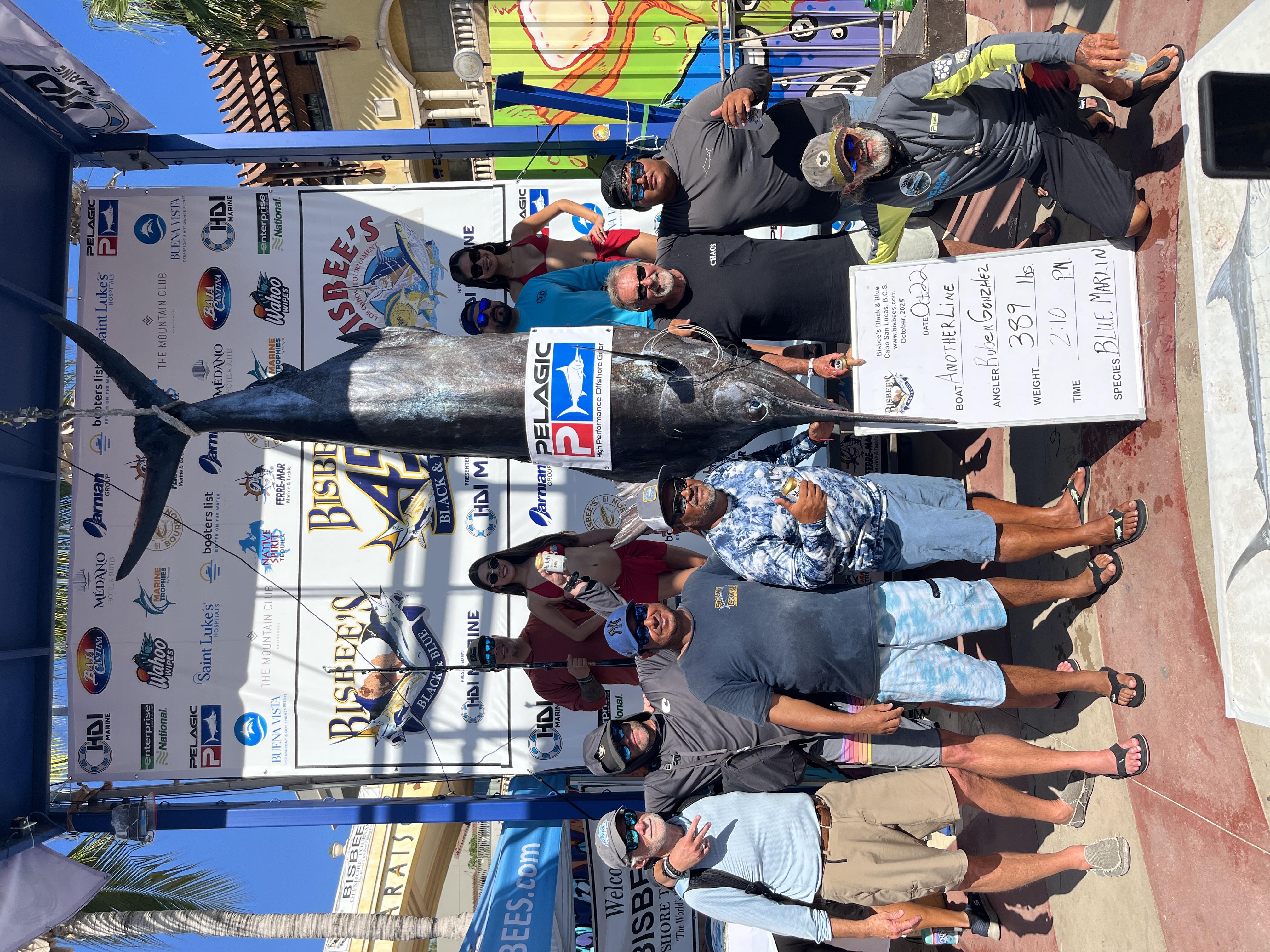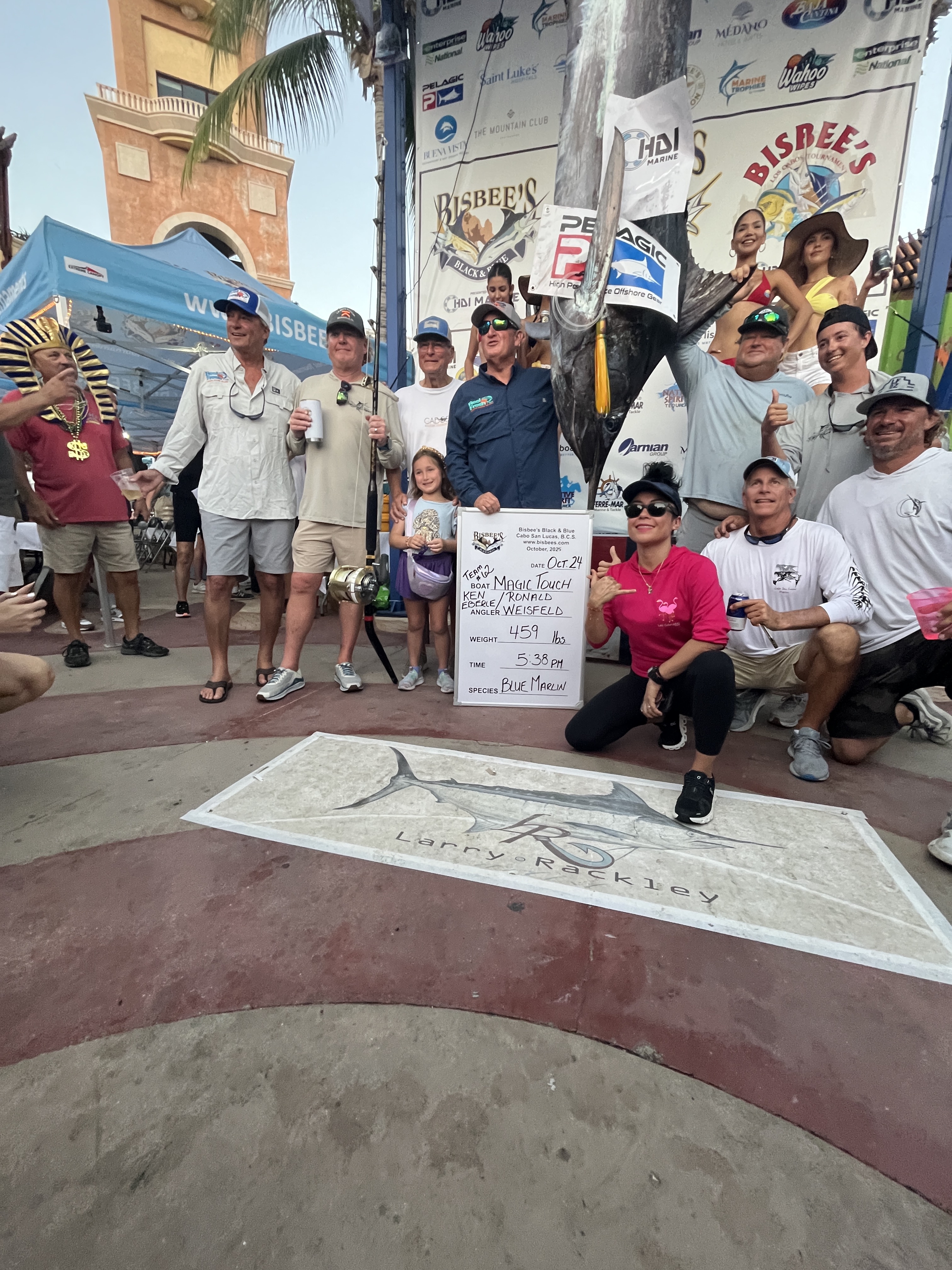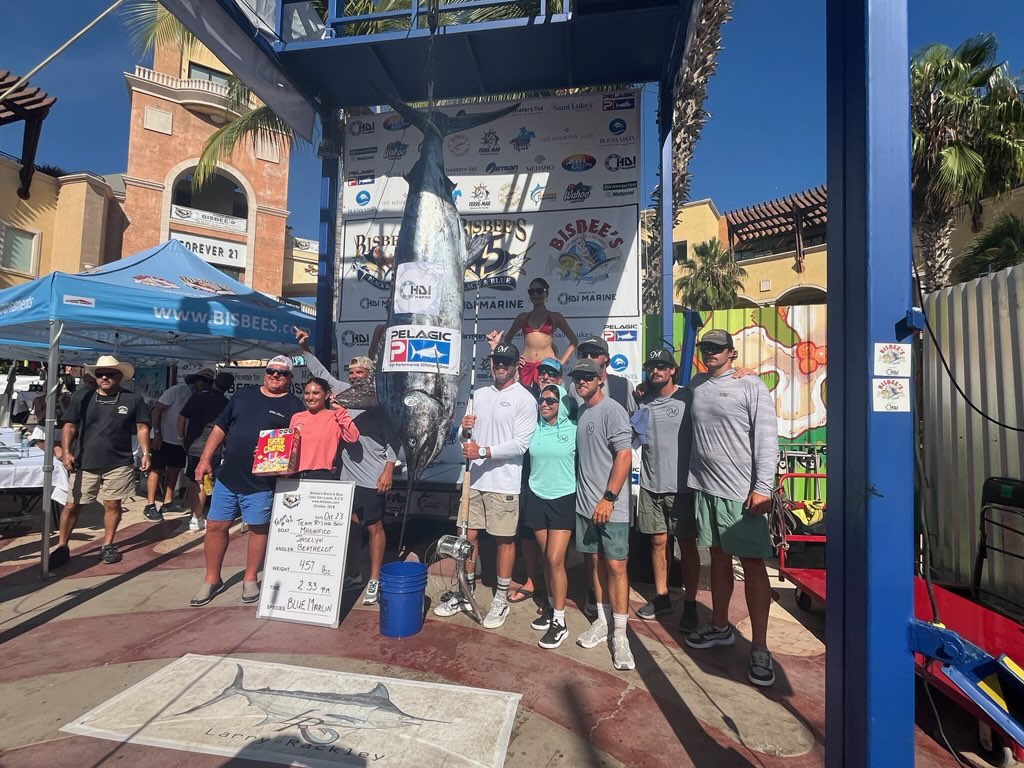The leaderboard has been christened. Team Another Line was the first to bring in a qualifying marlin on the first day of the 2025 Bisbee’s Black & Blue Tournament. Anglers Ruben Gonzalez and Ryan Rodenberg shared angling duties to boat the 389-pound blue marlin. It measured 102 inches long (lower jaw to tail fork) with a 58-inch girth. There are still two full days of fishing remaining. But as it stands right now, Team Another Line’s marlin is worth more than a million dollars. Another Line is entered in all optional jackpots with the exception of the $20,000 Daily. The team is also in both release divisions.
“This is my very first tournament,” Gonzalez said. “I got an invite from one of my buddies as a birthday gift. The fight was about 25 minutes. I don't even know what the bait was or the tackle. They just said here, grab the rod. I didn't know what to expect. All of a sudden I'm fighting this monster and I was so excited. The rest is just a bonus.”
A total of 177 teams are competing for more than $7.4 million in total cash prizes. All teams are entered in the base category. To win the really big payouts, however, entry in the optional divisions is necessary. Daily jackpots range from $500 bets up to the $20,000 level. The two daily release divisions require extra $2,000 and $3,000 buy-ins. In other words, teams bet on themselves that they will catch the heaviest marlin of the day or release the most to win the extra jackpots. To do that requires skill, coordination and always a bit of luck.
The Black & Blue is a team event. Multiple anglers can handle the rod to fight the fish. The rod cannot be placed in a rod holder to simply crank the reel, though.
For the first day, 47 blue marlin were caught, along with five black marlin. Surprisingly, no striped marlin were reported. The Black & Blue is geared towards blues and blacks. Stripers, sailfish and other billfish are simply released.
Blue marlin tend to stay in open water with current and bait. Black marlin are more structure-oriented, so they are often found near Baja’s many underwater mounts and other rock formations. Because of these tendencies, boats typically troll lures in open water for blues to cover a lot of water. For blacks, live baiting is the preferred tactic. Contestants will jig for small bonita, tuna and other bait and once caught, those baits are kept alive in flooded tuna tubes located on the transom. A constant stream of water keeps the baits alive and frisky until they are deployed on lines near the structure. The captain will bump the engines in and out of gear to keep the lines from fouling.
Live baiting for marlin got its start in Baja and the California West Coast. The practice has spread throughout the sport and has become very popular in the Gulf, where the many oil and gas rigs serve as structure to attract bait and billfish. There are several Gulf teams competing in the Black & Blue this year, hoping to turn those skills into a winning combo.
As the sky turns gold and amber to the east with the rising sun, the fleet will be getting ready for another day of competition. Will Team Another Line still have sole possession of first place by the time the sun sets again? Or will a new contender come to the scales? The outcome will be clear come mañana.
Photo courtesy of Bert Merritt



